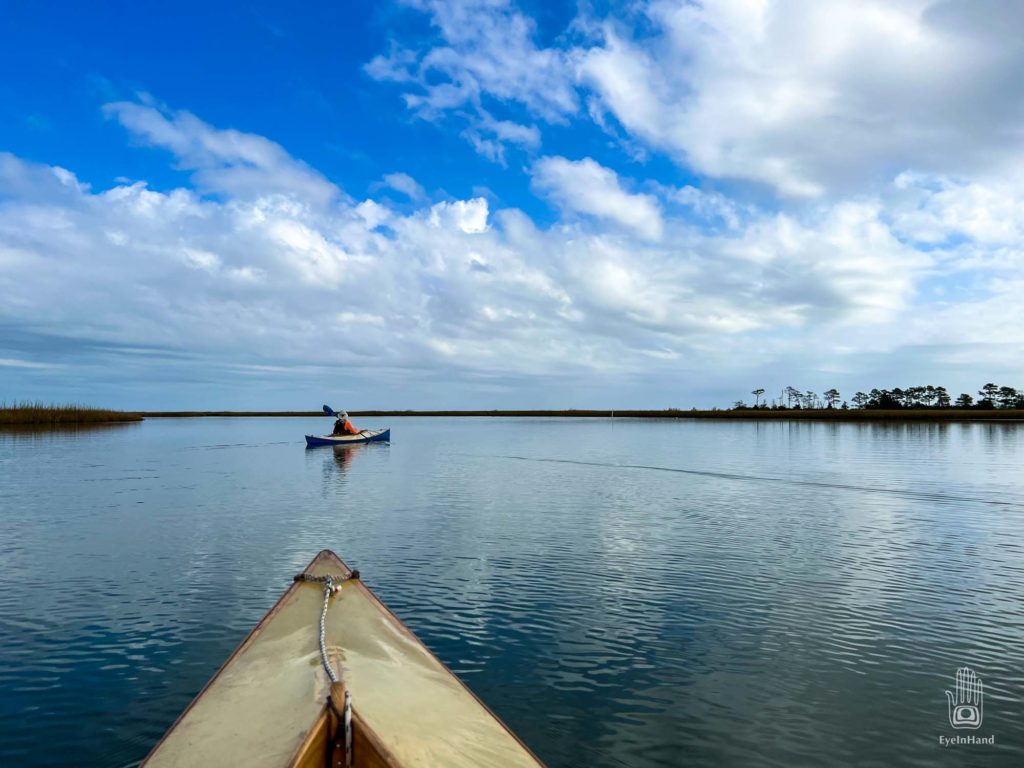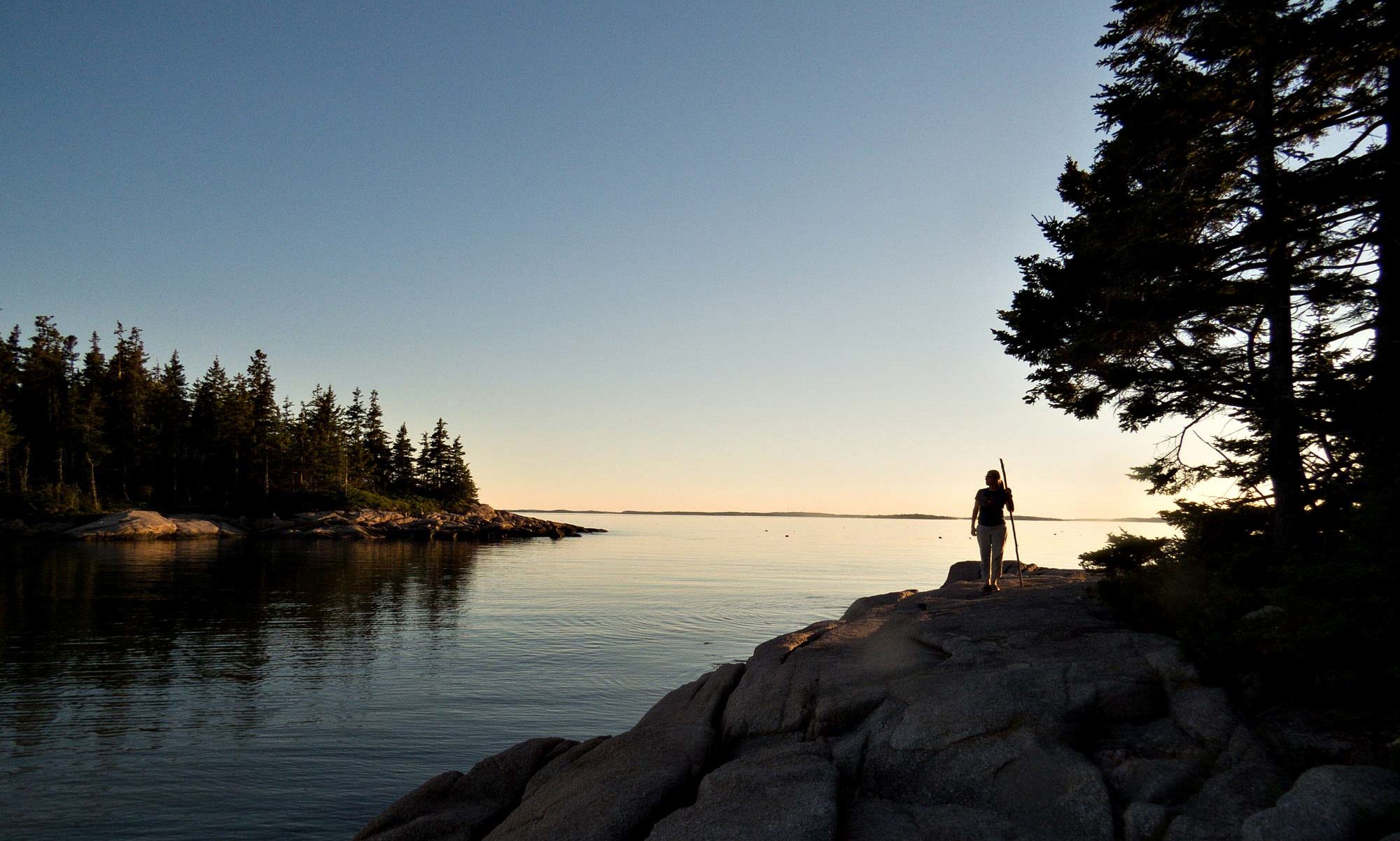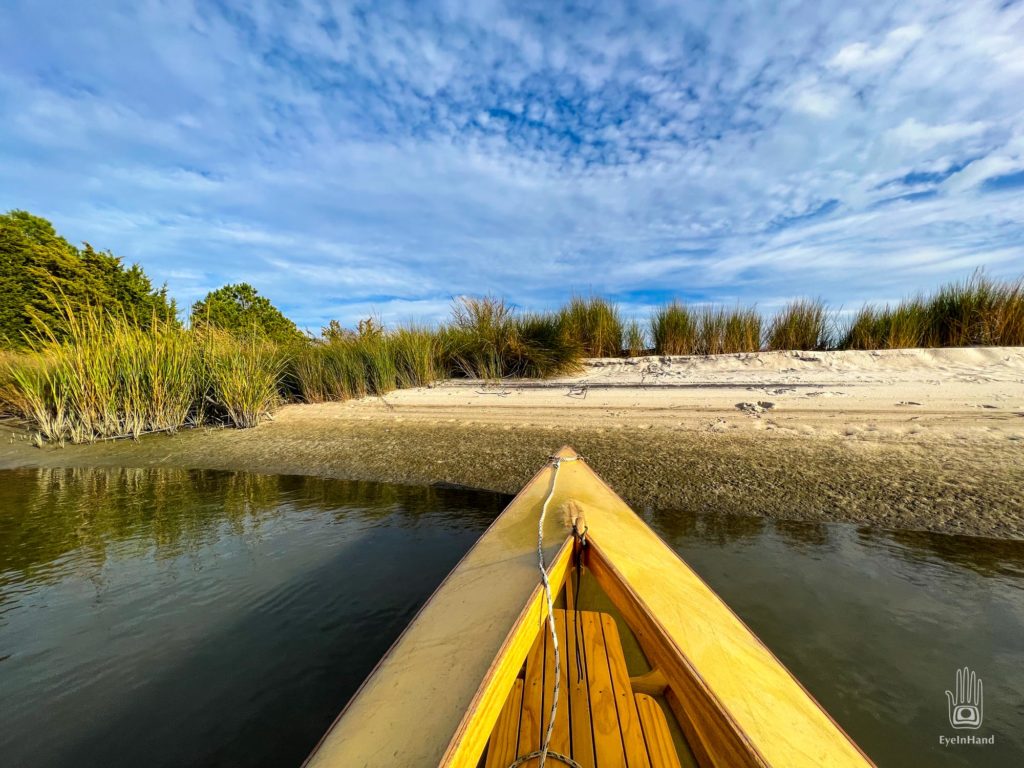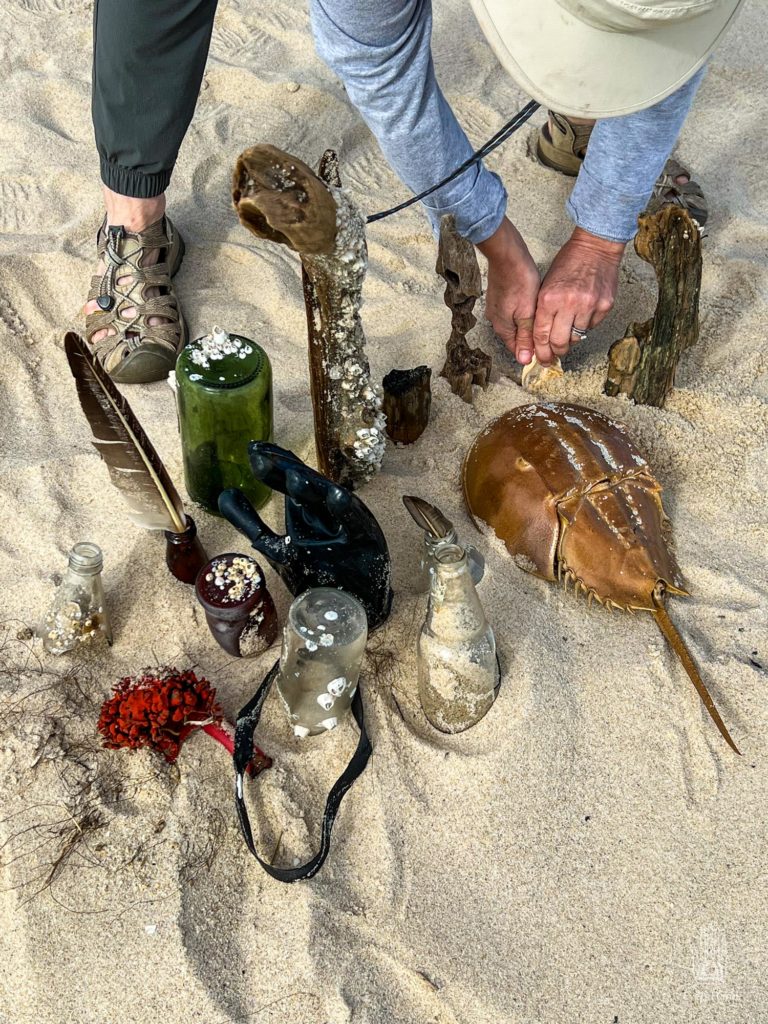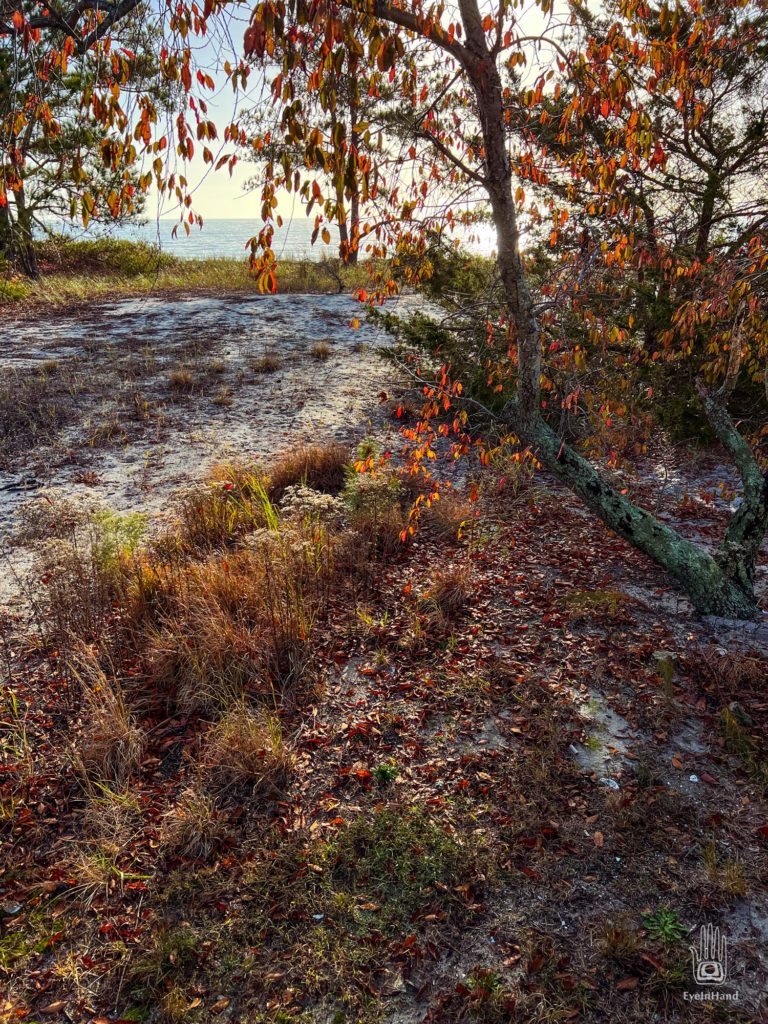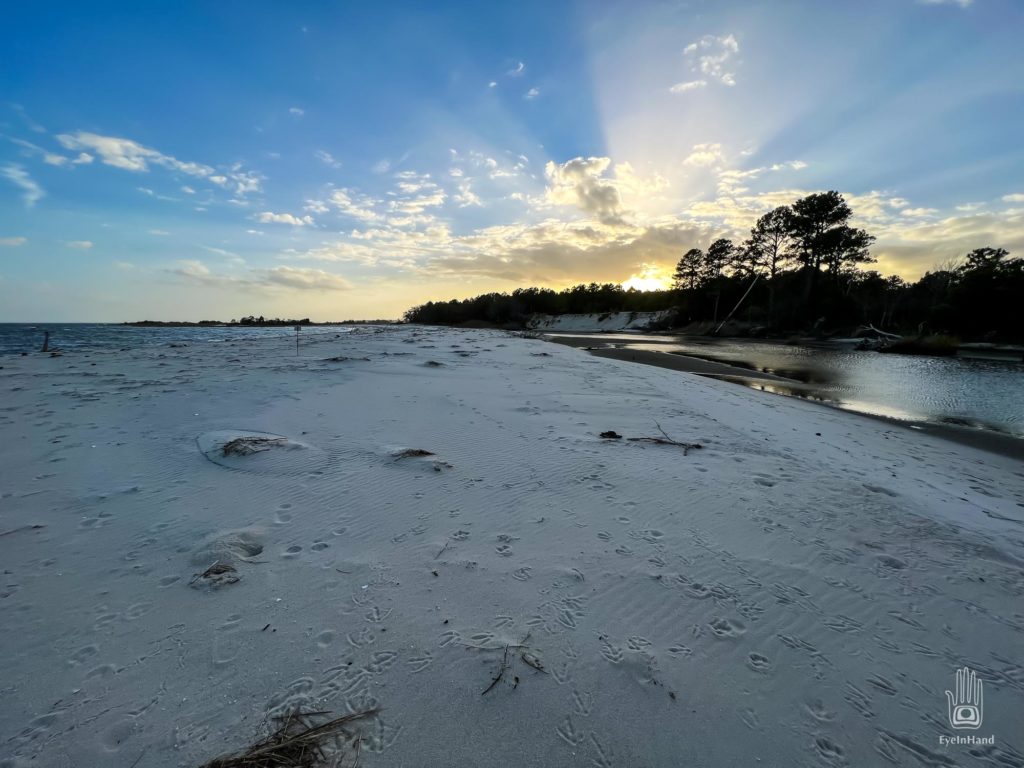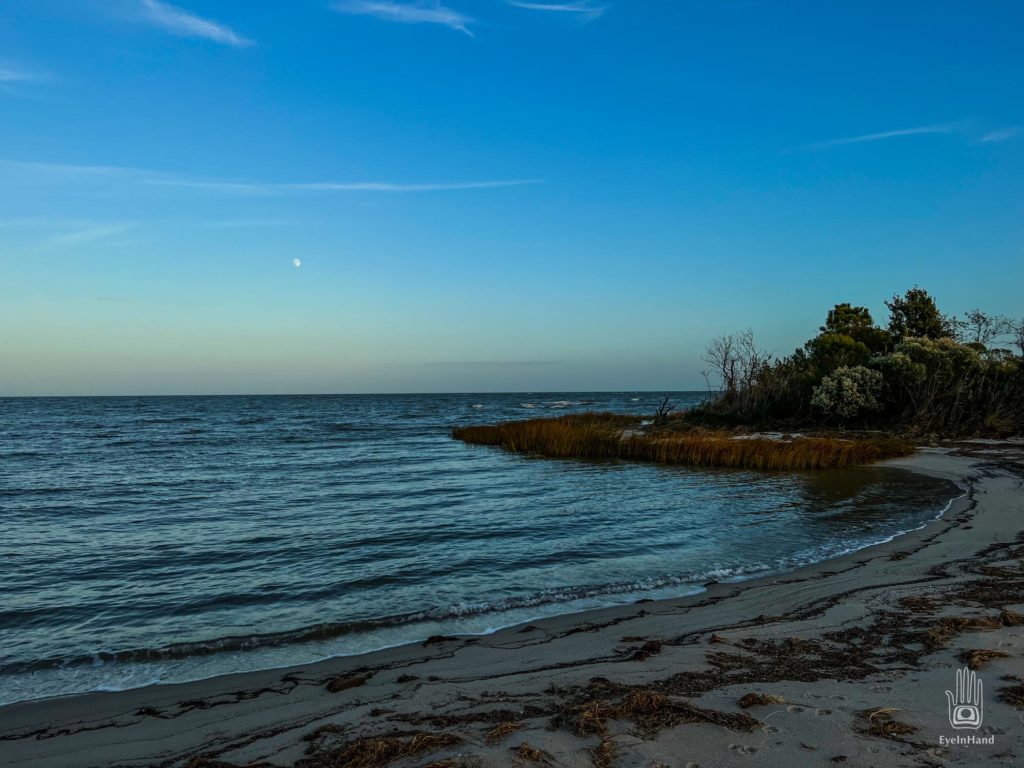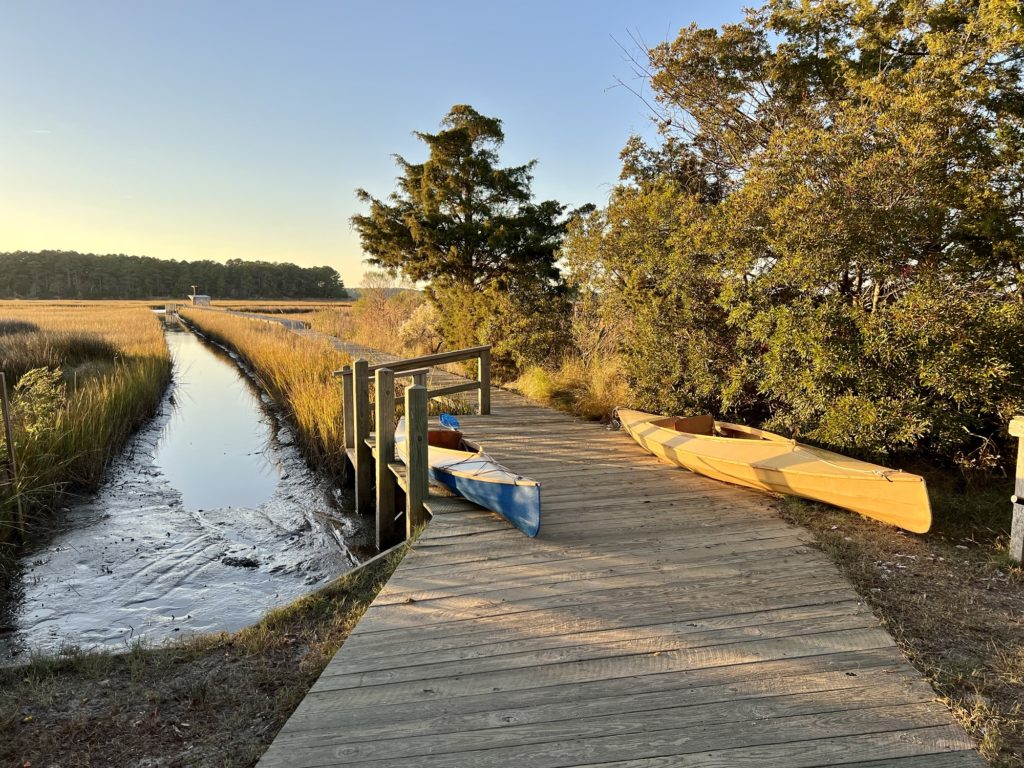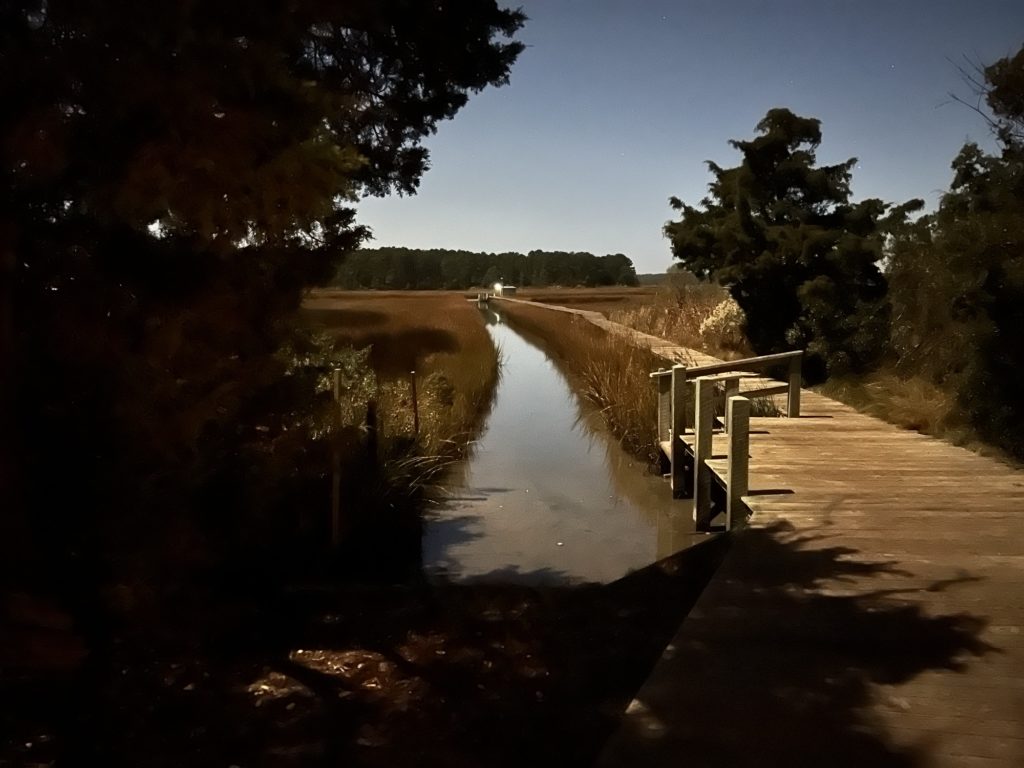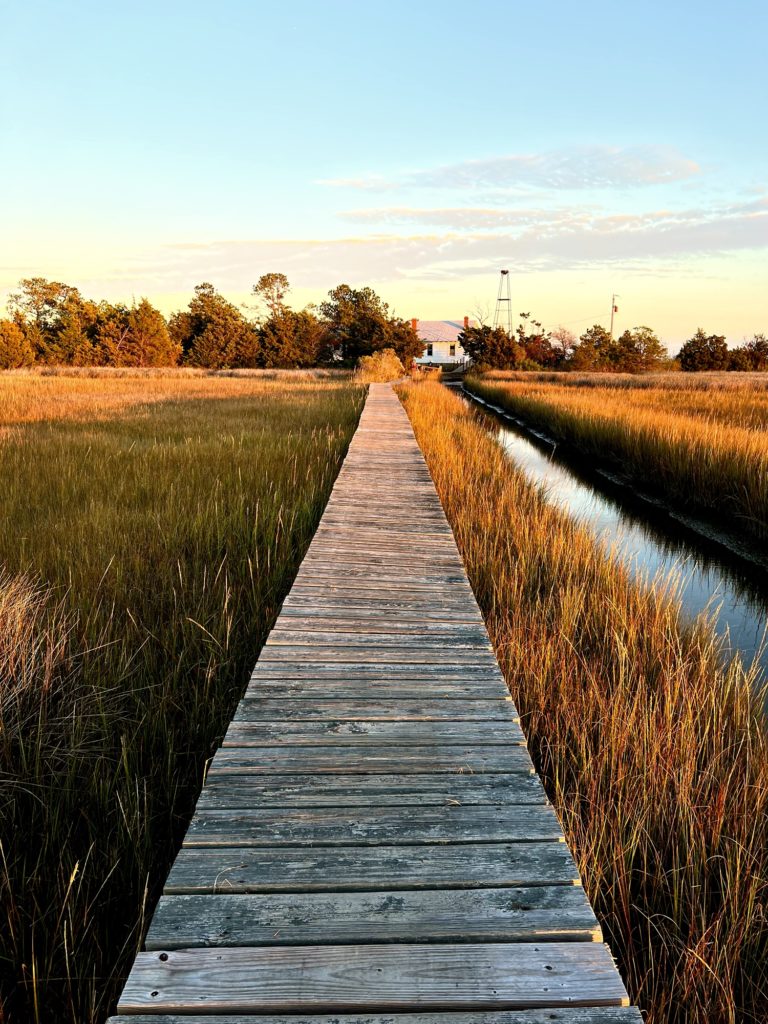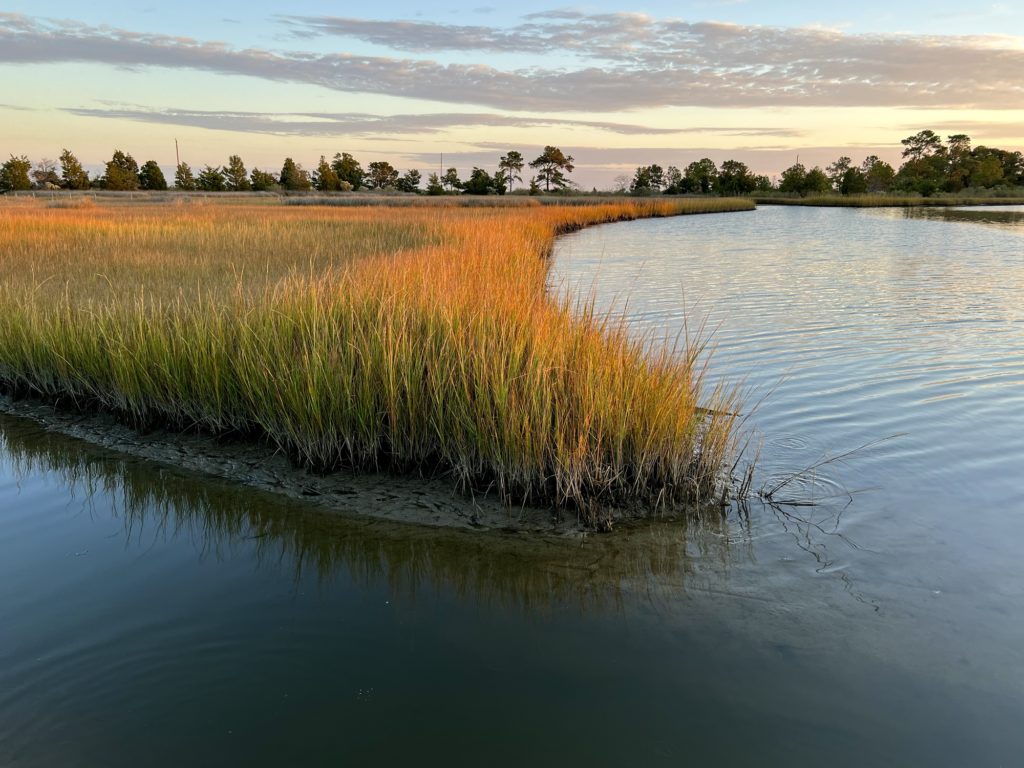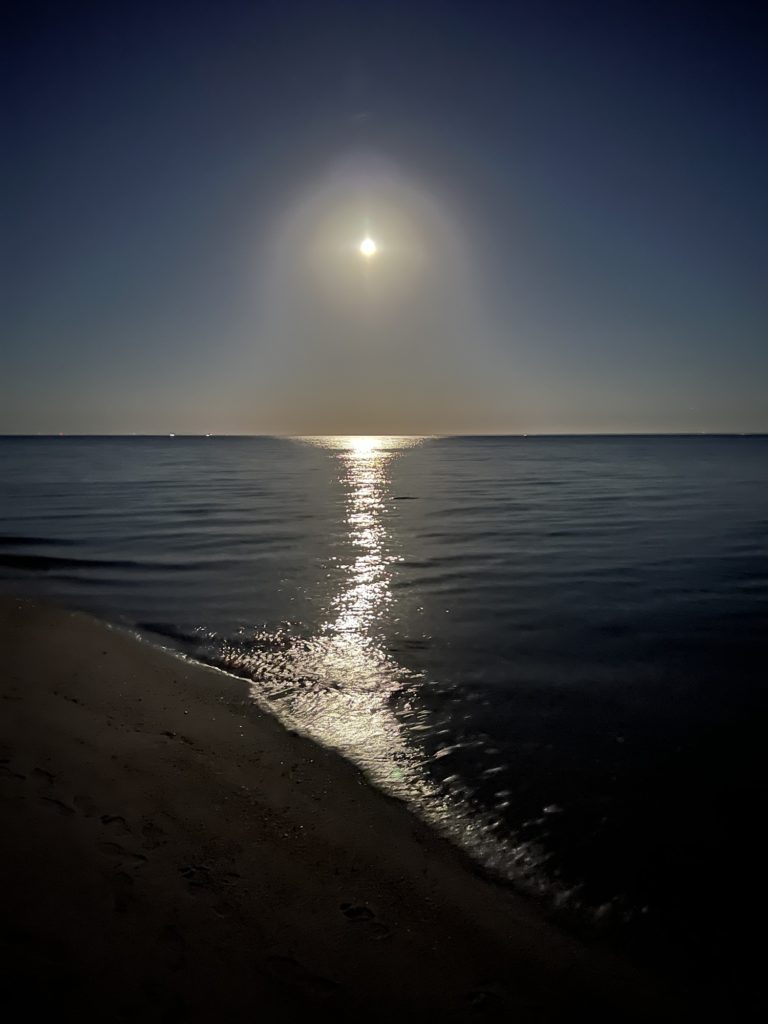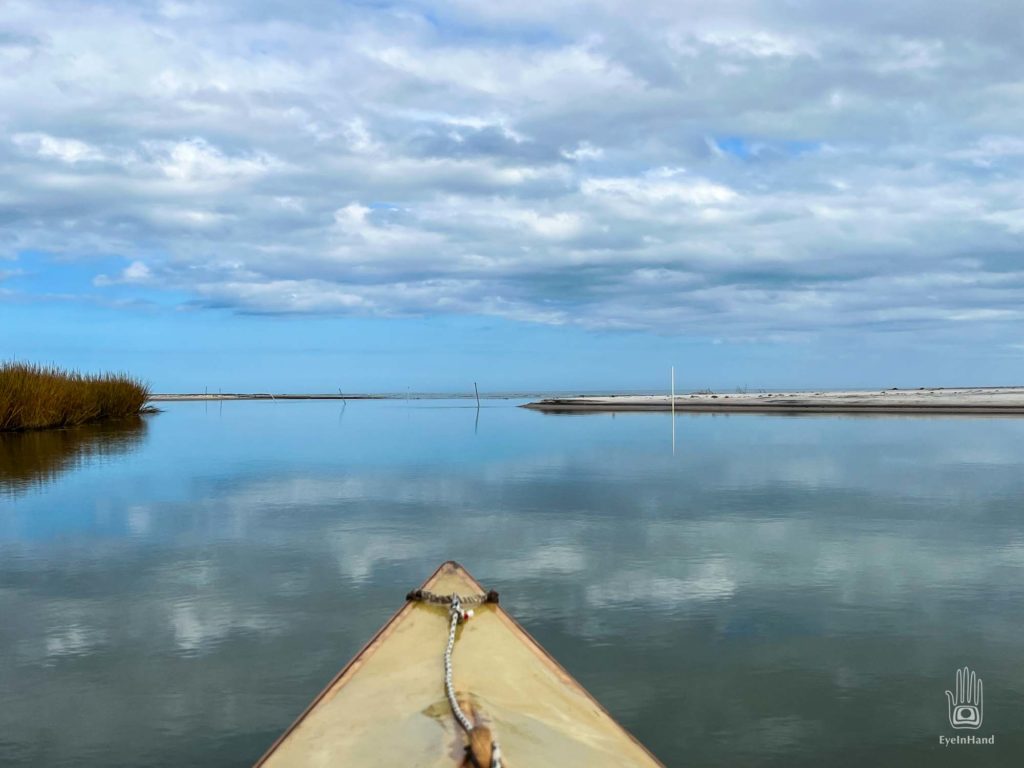
We saw where the sand ended up; we want to see where it came from – the North end.
The dock is wet and slippery. Tonight is the fullest of Full Moons, the night of an eclipse, so tides are especially high. Water lapped the bottoms of the kayaks on top of the pier where I tied them down to pylons.
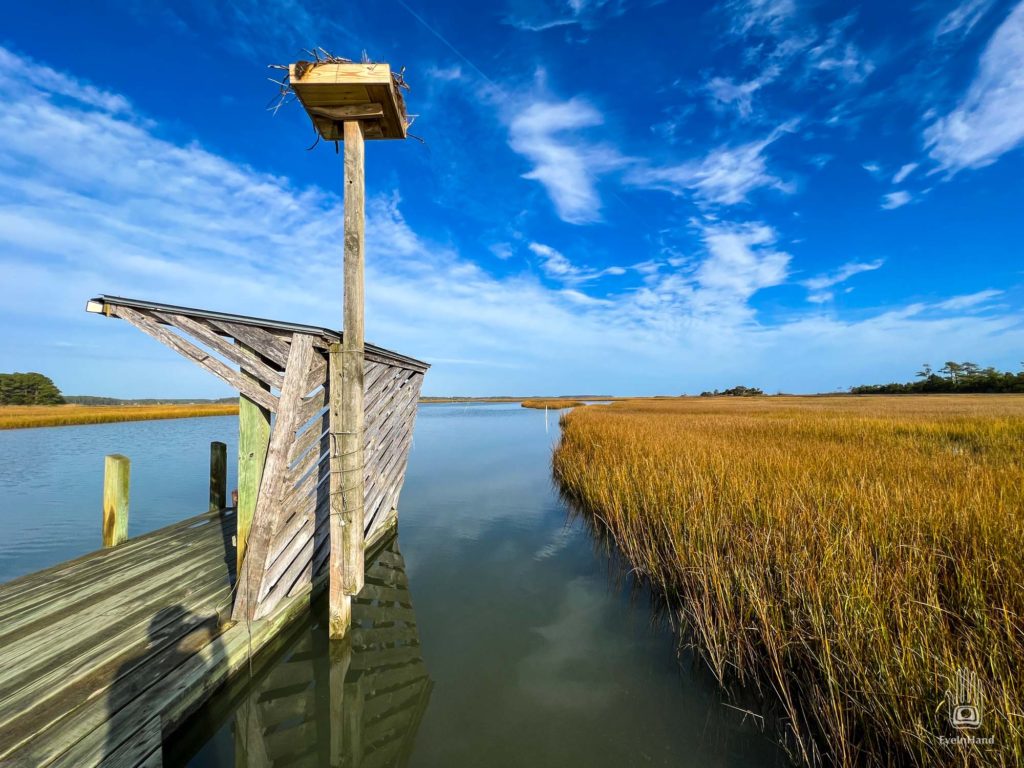

By early afternoon, we can walk the deck without wading, but the wet parts are slick as greasy ice.



Following oxbow creeks, it’s about two miles to the north inlet. At least it was last year, where inlet was.
It’s an easy paddle on a calm day, riding the outgoing tide. We pass a couple of new duck blinds, the remains of an old one – storm battered, bent down on one knee – another repaired and ready for the coming season.

One by one, the creeks converge on the way to the bay, growing wider and deeper, the current stronger. We round a curve and I have a hard time making sense of what I see. Where before was island and sand and marsh grass, I see an unbroken horizon of blue water.

We paddle beyond the break to what’s left of the sandbar, beach the boats to look around.
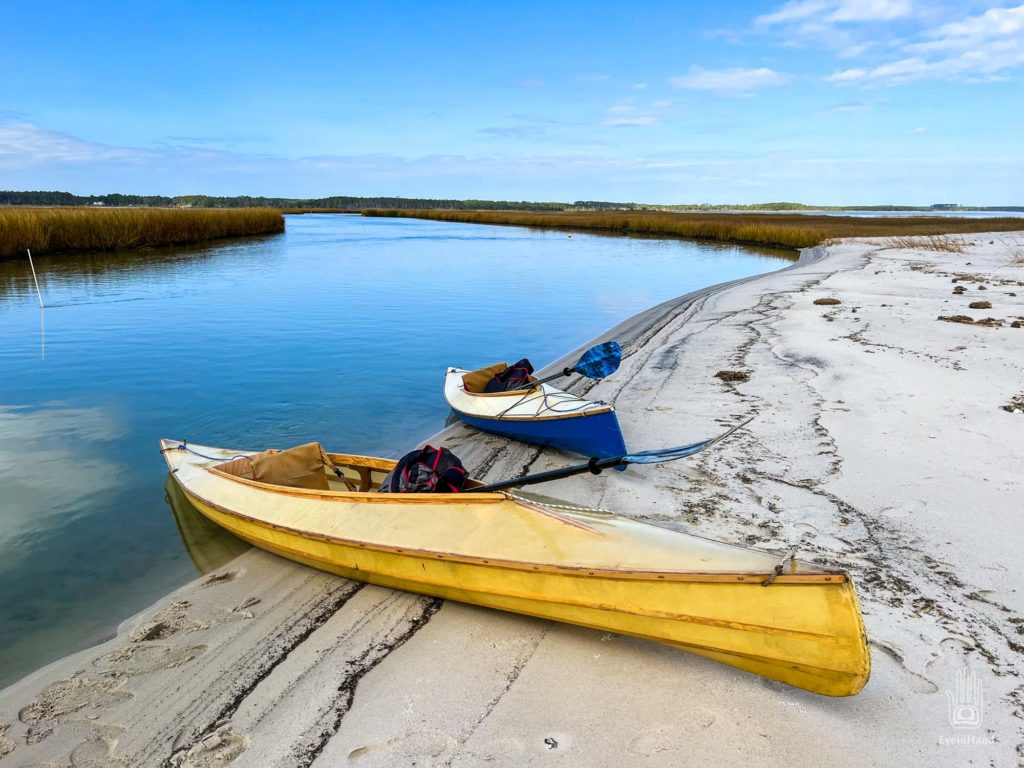
Amazing. Last time I paddled to this spot, there was ¾ mile of more creek before reaching the inlet. The island was narrow in places, mostly sand, but very much land. Most of that is gone. This last bend in the creek exits right into the bay.

The former island tip remains apart, a small islet of sand and grass surrounded by water. Clearly won’t be there much longer. The new wider north inlet now extends more than a mile to the mainland. Much of the sand here is washing out in shoals, or sifting into the marsh. Root stubble pokes up through waves of the Bay now, what had been all marsh behind the barrier island, for now still gripping marsh mud.



You can see the dramatic change in recent satellite images. Here is the whole island shot ten years ago, with the north and south inlets still deep and navigable by large boats.

And these are the south and north inlets last year, before the winter storms.

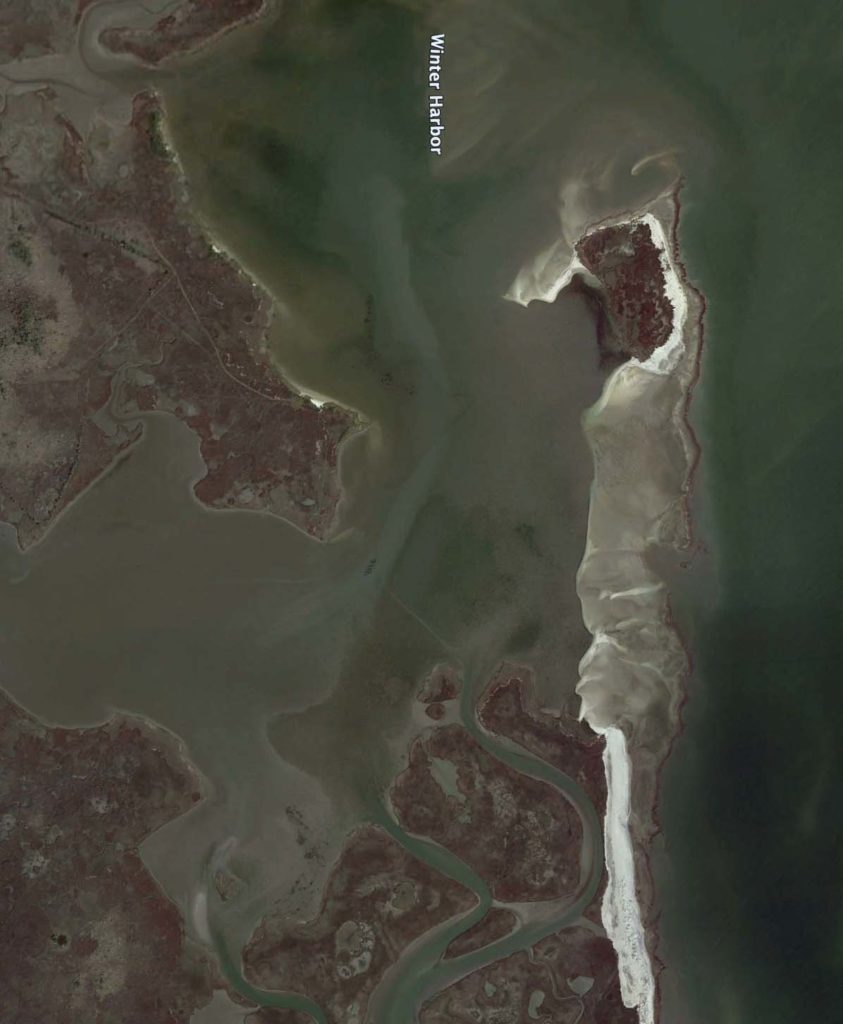
And here is the island now, showing both inlets. I’ve edited this to show the current conditions on the satellite image from last year. There’s a new break in the last bend of the creek. The bar just beyond is now water. And the south inlet is a wide sand beach.

You can see the change best if the two images are overlaid and animated. If the animation below is not playing automatically, click on the image to open it.

I knew this was coming, and said so to T. But did not expect it my lifetime; certainly not in the span of a year.
Not sure what we’ll see if we come back next year. A lot less, if the trend continues, and no doubt it will.



